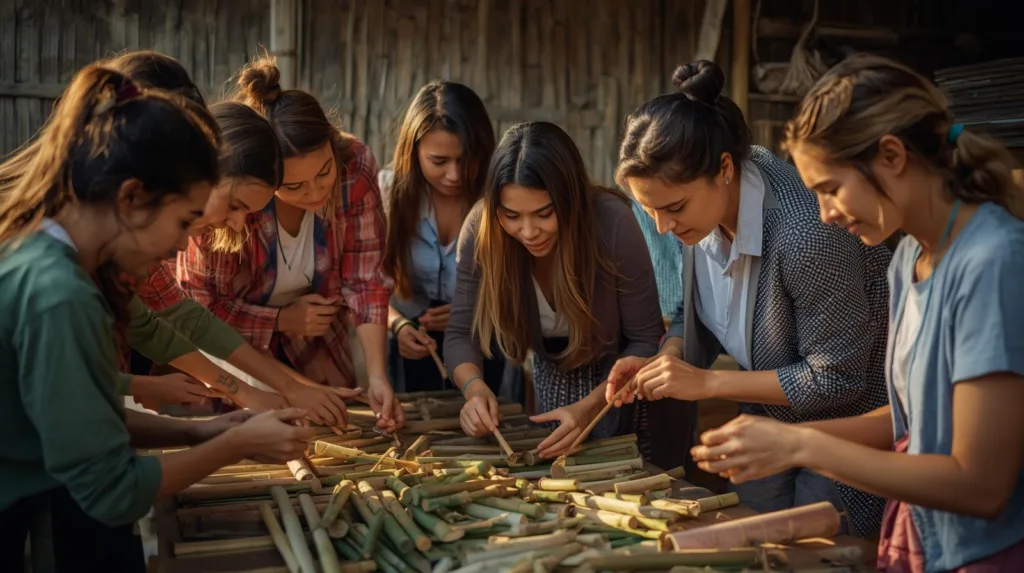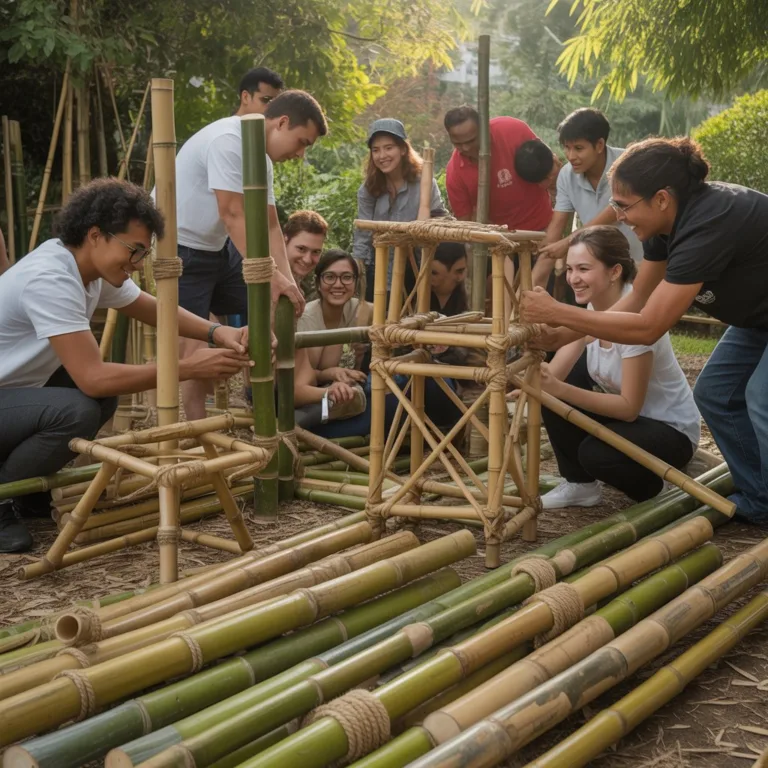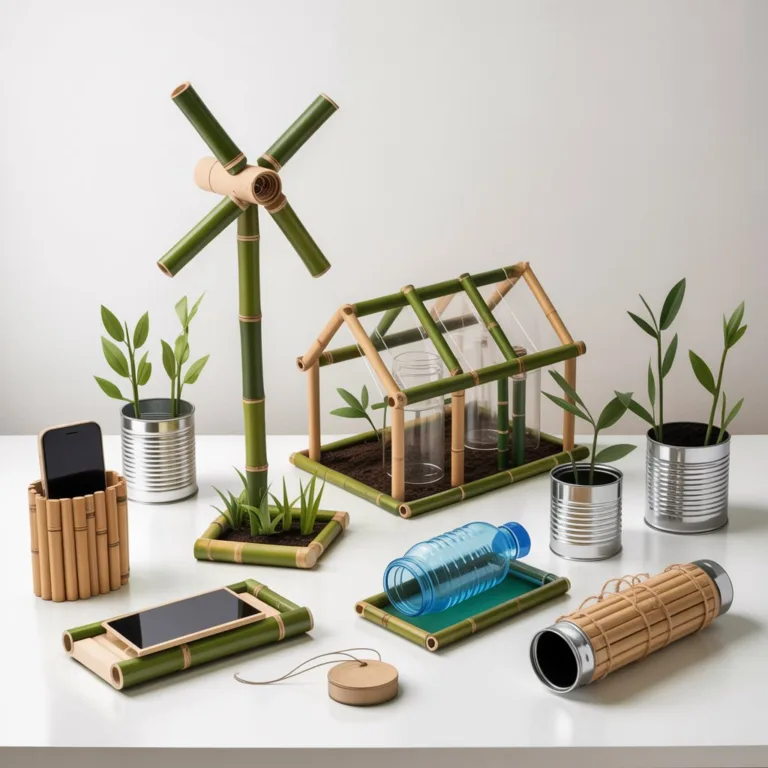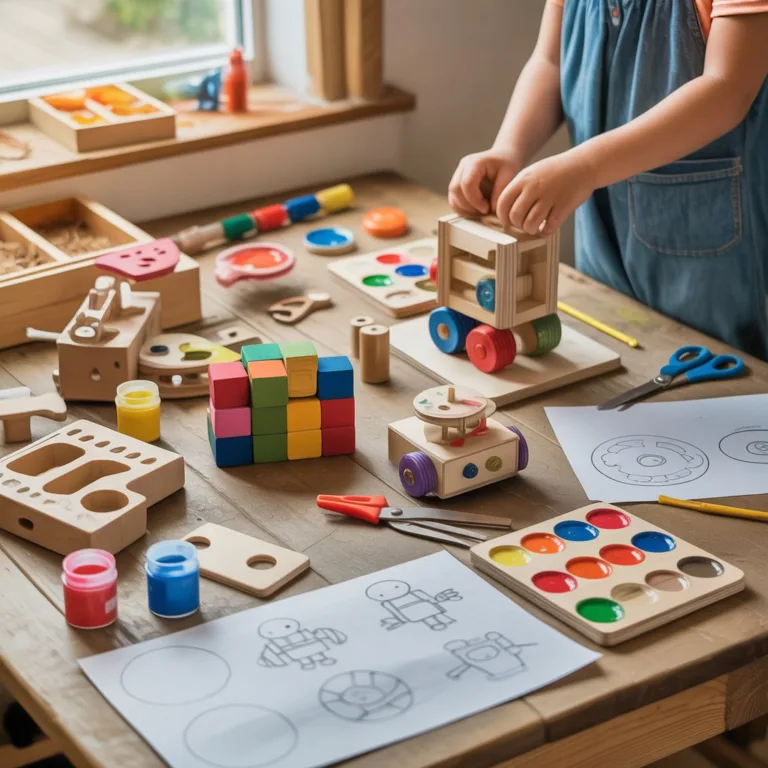In today’s world, team-building has become a crucial part of both educational and workplace environments. It encourages communication, collaboration, trust, and problem-solving — all while fostering creativity and fun. While there are countless ways to strengthen teamwork, few approaches combine sustainability, craftsmanship, and playfulness as effectively as team-building games using handmade bamboo tools.

Bamboo, a fast-growing and renewable resource, offers endless possibilities for crafting durable, eco-friendly tools that can turn ordinary activities into engaging group challenges. Whether you’re running a corporate retreat, organizing a school activity, or hosting a community event, bamboo-based games promote not just teamwork, but also environmental awareness and hands-on creativity.
This comprehensive guide explores how to design, craft, and use handmade bamboo tools for various team-building games. You’ll discover practical ideas, crafting instructions, and inspiring ways to make every activity meaningful and memorable — all while embracing sustainability.
Why Use Bamboo for Team-Building Activities
The Sustainable Edge
Bamboo is often called the “green steel” of the plant world. It grows incredibly fast — sometimes up to a meter per day — and regenerates naturally without the need for replanting or heavy chemical inputs. Choosing bamboo over plastic or metal materials significantly reduces your environmental footprint.
By creating bamboo-based tools for games, teams actively participate in sustainability while enjoying the physical and creative aspects of crafting. Every pole, stick, or bamboo ring becomes a symbol of environmental responsibility.
Strength and Versatility
Despite its lightweight appearance, bamboo is remarkably strong. It can support substantial weight, resist bending, and endure impact, making it perfect for constructing game props that need both flexibility and durability.
Its versatility allows for the creation of everything from relay batons and balance beams to throwing targets and puzzle pieces. Bamboo’s natural texture and warm tone also add an organic, calming feel to any activity setting.
Promoting Connection Through Craft
Handmaking the tools before the games adds a deeper layer of collaboration. When participants build their own game materials, they engage in problem-solving, creativity, and coordination before the games even begin. This dual process — crafting and playing — strengthens interpersonal bonds and gives everyone a sense of ownership and pride.
Preparing Bamboo for Safe and Effective Use
Before diving into the games themselves, it’s essential to prepare your bamboo materials properly.
Selecting the Right Bamboo
Choose bamboo that’s mature (around three to five years old) for sturdiness. Younger bamboo can be too soft, while overly aged bamboo may become brittle.
For small tools or handheld items, thin bamboo culms (1–3 cm in diameter) are ideal. For larger structures or balancing games, thicker poles (4–7 cm) provide better support.
Cutting and Smoothing
Cut the bamboo with a fine-tooth saw to avoid splitting. After cutting, sand the edges and surface to remove splinters and rough spots. You can also apply a thin layer of natural oil — such as coconut or linseed oil — to enhance durability and water resistance.
Treating Bamboo Naturally
To prevent mold or insect infestation, soak the bamboo in a mild saltwater solution for a day, then dry it thoroughly in the shade. This simple step ensures your handmade bamboo tools stay safe and last longer.
The Bamboo Relay Challenge
This fast-paced game promotes coordination, timing, and trust — essential qualities in any team.
Crafting the Tools
You’ll need several bamboo tubes (30–40 cm long, about 2–3 cm in diameter). Smooth the edges and ensure the inside is hollow. These tubes will serve as relay batons or transport channels.
How to Play
Participants form teams. Each team uses their bamboo tubes to transfer small objects — like marbles, balls, or seeds — from a starting point to a finish line without touching them with their hands. The challenge is to align the tubes perfectly so the object rolls smoothly from one end to the other.
Each mistake or drop requires the team to restart, reinforcing focus and communication.
Learning Outcome
This activity strengthens collaboration under pressure and encourages problem-solving through collective coordination.
Bamboo Balance Beam
Balance activities test both individual focus and team synergy. A bamboo balance beam transforms a simple coordination game into a dynamic exercise in support and trust.
Crafting the Tools
You’ll need a thick bamboo pole about 10–15 cm in diameter and 2–3 meters long. Mount it securely between two stable supports, roughly 20–30 cm off the ground.
How to Play
Teams must cross the bamboo beam one member at a time without touching the ground. The twist? They must help each other maintain balance.
You can increase the difficulty by adding conditions — such as carrying a bamboo pole together or transporting an item without dropping it.
Learning Outcome
This game emphasizes mutual trust, nonverbal communication, and balance — both literal and figurative. It helps participants understand the importance of coordination and support in achieving shared goals.
The Bamboo Tower Challenge
Few activities demonstrate teamwork like building something together. The bamboo tower game requires teams to design and construct the tallest possible structure using only bamboo sticks and natural cord.
Crafting the Tools
Prepare several bamboo sticks of varying lengths (between 30 cm and 1 meter). Include natural jute or hemp rope for tying joints. Avoid nails or plastic ties to maintain eco-friendliness.
How to Play
Divide participants into teams. Each group receives an equal number of bamboo pieces and cord. Their task is to construct a freestanding tower that can hold a small object — like a pebble or paper cup — at the top.
Encourage teams to plan their design first, distribute roles (builders, supporters, designers), and then execute within a time limit.
Learning Outcome
The bamboo tower game cultivates strategic thinking, leadership, delegation, and adaptability. It also reveals how collaboration under time pressure fosters innovative thinking.
Bamboo Ring Toss
Simple yet exciting, the bamboo ring toss game adds an element of friendly competition while improving focus and coordination.
Crafting the Tools
Cut several bamboo tubes into 20–25 cm segments for poles and secure them upright in the ground or in a base made of sand or clay. Create rings by slicing thin bamboo pieces into loops or shaping natural vine into circles.
How to Play
Teams take turns tossing bamboo rings toward the upright poles. You can assign different point values based on distance or pole height.
To increase complexity, introduce team variations — such as blindfold tosses with verbal guidance or synchronized throws.
Learning Outcome
The ring toss game sharpens hand-eye coordination, communication, and encouragement. It’s perfect for mixed-age groups and inclusive team-building sessions.
The Bamboo Bridge Connection
This advanced group challenge simulates real-world collaboration and engineering under constraints.
Crafting the Tools
Provide long bamboo poles (around 2–3 meters each) and natural rope or vine. Teams must use these materials to build a temporary bridge that can support a lightweight object or even a team member crossing a short distance.
How to Play
Teams design, tie, and test their bridge within a set time frame. Success depends on how well members divide tasks, share ideas, and manage limited resources.
Learning Outcome
This activity promotes engineering thinking, problem-solving, and leadership while demonstrating how collective creativity can turn basic materials into functional structures.
Bamboo Obstacle Course
A bamboo obstacle course is ideal for outdoor retreats or school programs. It blends movement, teamwork, and nature.
Crafting the Tools
Use bamboo poles of varying lengths to create obstacles such as low hurdles, balancing rails, or tunnels. Combine them with rope, stones, or natural supports for variety.
How to Play
Teams must navigate the obstacle course while performing specific cooperative tasks — carrying an object together, staying connected by rope, or guiding a blindfolded teammate.
Learning Outcome
This physically engaging game reinforces trust, communication, and adaptability. It’s especially effective for breaking down barriers in new groups.
The Bamboo Communication Maze
Effective communication lies at the heart of teamwork. The bamboo communication maze transforms this principle into an interactive lesson.
Crafting the Tools
Set up a simple maze using upright bamboo poles and rope. Create pathways wide enough for walking, but twisty enough to be challenging.
How to Play
One person from each team is blindfolded and must navigate the maze using only verbal instructions from teammates outside the structure.
Learning Outcome
This exercise enhances listening, clarity, and leadership skills, while highlighting the importance of patience and trust in communication.
Integrating Crafting as Part of Team-Building
A unique aspect of using handmade bamboo tools is that the crafting process itself can be turned into a team-building activity.
The Pre-Game Craft Session
Before starting the games, divide participants into smaller groups and assign them tool-making tasks — cutting bamboo, assembling frames, tying joints, or painting decorative markings.
This collaborative crafting stage encourages:
- Creative thinking as teams design their tools.
- Coordination as they divide responsibilities.
- Sustainability awareness as they repurpose natural materials.
By the time the games begin, participants are not just players — they’re creators, connected to the tools and to each other.
Safety, Maintenance, and Environmental Responsibility
Safety and sustainability go hand in hand when working with natural materials.
Safety Tips
- Always check bamboo edges for splinters and smooth them before use.
- Ensure structures like balance beams or bridges are stable.
- Supervise children during crafting and gameplay.
- Use natural rope instead of wire or synthetic cords to avoid injury.
Maintenance and Reuse
After each session, inspect tools for cracks or wear. Properly dried and stored bamboo can last for years. If any part becomes unusable, compost or recycle it responsibly.
When repainting or repairing, opt for natural pigments and eco-friendly adhesives.
Respecting Nature
Avoid harvesting bamboo from protected areas. Use local, farmed bamboo or repurpose old poles from construction or gardening projects. The goal is to celebrate teamwork without harming the environment.
Expanding the Experience: Workshops and Events
Organizers and educators can extend the idea of team-building games using handmade bamboo tools into larger community initiatives.
Eco-Team-Building Workshops
These workshops can include sessions on crafting, game design, and environmental education. Participants leave not only with better teamwork skills but also with tangible knowledge of sustainable living.
Corporate and Educational Programs
Companies seeking greener team-building alternatives can adopt bamboo-based games as part of their annual retreats or CSR (Corporate Social Responsibility) initiatives. Schools can integrate them into environmental awareness campaigns, sports days, or art projects.
The tactile, nature-centered aspect of bamboo crafts creates a refreshing break from digital-heavy routines, reintroducing participants to creativity rooted in simplicity.
The Power of Play and Sustainability
Combining team-building games with handmade bamboo tools transforms an ordinary group activity into something deeper — a shared creative journey that strengthens relationships, teaches resourcefulness, and promotes ecological mindfulness.
When people collaborate to craft, play, and reflect, they rediscover essential human values: cooperation, respect for nature, and the joy of shared purpose.
So gather your team, pick up some bamboo, and start creating. Each tool you make and every game you play becomes more than just a challenge — it’s a small, joyful act of sustainability.

Elena Mora is a creative educator and eco-craft enthusiast who specializes in bamboo musical instruments and sustainable toys for children. She believes that hands-on learning through play teaches kids about creativity, music, and environmental responsibility.



